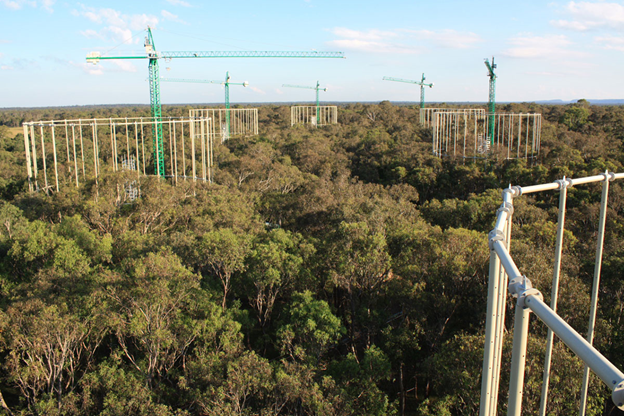Increasing atmospheric CO2 concentrations, which causes climate change, also desynchronizes nutrient cycles
University of Cádiz press release
The interactions between soil nutrients change significantly with increasing atmospheric CO2 concentrations, according to a recent study published in the Journal of Ecology and led by Dr. Raúl Ochoa-Hueso from the University of Cádiz.

This study, carried out in a native eucalypt woodland in Australia, showed how soil nutrient cycles can quickly become unsynchronized in response to an increase in atmospheric CO2 concentrations, despite the lack of detectable changes in the availability of these nutrients.
A strong relationship between multiple nutrient cycles is associated with healthy, fully functional soils, both in natural and agricultural ecosystems. Therefore, it is important that nutrients are not only available in the soil, but that they are present in optimal proportions needed for plant uptake to support healthy plant growth.
As Dr. Raúl Ochoa-Hueso, Ramón y Cajal researcher at the University of Cádiz and leader of the study, points out, “the desynchronization of nutrient cycles in ecosystems could mean that organisms can not satisfy their simultaneous demand for multiple essential nutrients. This mismatch can result in a loss of physiological functioning”.
But this effect goes beyond the plants themselves and other associated organisms that need specific ratios of key nutrients, as Dr. Ochoa-Hueso also commented: “Changes in nutrient cycles can result in a cascade of effects with unpredictable consequences at all trophic levels, with implications for the functioning and biodiversity of these ecosystems”.
The authors of the study suggest that subtle responses such as the desynchronization of nutrient cycles in an ecosystem, can be used as early indicators of the effects of global change, and suggest that there could be unforeseen long-term consequences if we do not pay enough attention to these small changes.
Mega-structures to increase atmospheric CO2 in mature woodlands
This study was carried out at the EucFACE experiment, within Western Sydney University.
To carry out an experiment like this, it is necessary to locally increase the amount of CO2 within small parts of the woodland. This is achieved with large structures that release CO2 from ground- to canopy-level across those specific sites.
With this experiment it is possible to increase atmospheric CO2 from current concentrations of approximately 400 ppm to 550 ppm, which is what is expected for 2050 at the current rate of emissions’ increase.This unique experiment is being used by a multidisciplinary team of international researchers to investigate the consequences of elevated atmospheric CO2 concentrations on the biodiversity, structure and functioning of a mature woodland ecosystem. Among those investigations is the one that Dr. Ochoa-Hueso has directed to see the effects on nutrient cycles.
Read full study (free to read for a limited time):
Raúl Ochoa-Hueso, Juan Piñeiro, Sally A. Power. Decoupling of nutrient cycles in a Eucalyptus woodland under elevated CO2. Journal of Ecology. 2019. DOI: 10.1111/1365-2745.13219
Media contact:
Juan María Arenas , Press and Communication Manager, Email: juan@jmarenas.com, Tel: +34 652 963 241
Like what we stand for?
Support our mission and help develop the next generation of ecologists by donating to the British Ecological Society.